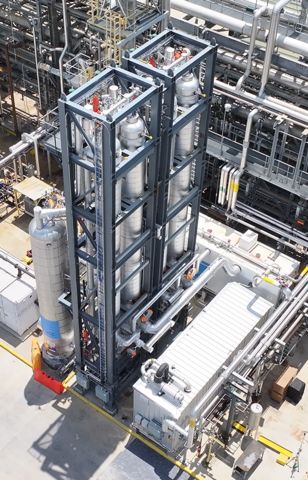Carbon America’s FrostCC Completes 1,000 Testing Hours, Shows Clean Capture
During testing at the National Carbon Capture Center (NCCC), FrostCC successfully captured CO2 and co-pollutants from flue gas.
Carbon America’s FrostCC, its novel cryogenic carbon-capture technology, successfully closed 1,000 hours of testing at the NCCC in Wilsonville, AL—a neutral research facility for third-party carbon-capture developers. The system achieved technology readiness level 6. Next, FrostCC will demonstrate its full-scale commercial product.
“Key differentiators for our technology include its proven ability to remove co-pollutants without separate treatment, and no concerns about other environmental emissions,” said Ashleigh Ross, Head of Commercial Development and Policy, Carbon America. “Coupled with plug-and-play retrofit ability and economies of scale driven by mass manufacturing and existing supply chains, FrostCC presents an opportunity to do maximum clean up with one solution.”
The point-source system removes CO2 before it reaches the atmosphere. FrostCC cools flue gas as below CO2 sublimation temperature, freezing it as dry ice and physically separating carbon from the gas mixture. Solid CO2 is periodically melted and gathered as liquid for compression and transportation to storage sites. FrostCC runs on electricity and captures carbon without water or chemicals.
“Experimental data from the testing at NCCC not just proved FrostCC’s viability as an effective carbon-capture technology, but also validated the physics-based models that enable design of the commercial product,” said Miles Abarr, Chief Technology Officer, Carbon Americas. “Looking to the future, we have confidence in our path to a commercial product.”
FrostCC installation at NCCC; Image Credits: Business Wire

During NCCC testing, the technology successfully demonstrated carbon- and pollutant-capture and validated the process and models for design. Carbon America also ran texts to explore FrostCC’s operational boundaries, establishing system performance characterization under environmental and realistic conditions.
Following the test pilot, Carbon America will deploy the first-iteration FrostCC module in commercial applications across emission-intensive industries, such as power plants, cement and steel, pulp and paper, and additional production facilities.
Carbon-Capture Technology
The type of carbon-capture technology employed determines the role or model of turbomachinery used. According to Daniela Abate, VP of CCUS at Baker Hughes, “Its role becomes critical for membrane-based, cryogenic, and hot potassium carbonate-based capture technologies, since they are operated with gas streams at medium/high pressures.”
Further considerations when selecting turbomachinery include “whether it is a retrofit project with limited available space and whether the site already has sufficient energy to run compression or if a new power generation unit will be needed,” Abate said.
In these installations, operating profiles are often challenging to manage (largely due to turndown), which can lead to the need for parallel units. However, these obstacles create opportunities, such as developing modular solutions to address plot availability issues and creating more efficient machinery equipped with energy-recovery solutions.